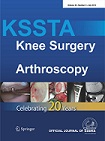
SPORTS MEDICINE
ACLR: Similar knee laxity and graft migration using serial dilation or extraction drilling
Knee Surg Sports Traumatol Arthrosc. 2011 Mar;19(3):347-54. doi: 10.1007/s00167-010-1220-3. Epub 2010 Aug 340 patients requiring anterior cruciate ligament (ACL) reconstruction were randomized to undergo the procedure using either serial dilation (SD) or conventional extraction drilling (ED) of the tibial tunnel. The purpose was to compare the two techniques with respect to graft migration and knee laxity over 24 weeks, assessed using radiostereometric analysis (RSA) and a TELOS stress device. Results revealed no significant difference between groups in the migration of the graft in the femoral tunnel or knee laxity at any time during the study. The only significant difference in the migration of the graft in the tibial tunnel was at the 12-week follow-up, however the clinical impact of this finding was questionable. In addition, the SD group experienced two deep infections, whereas none were observed in the ED group.
Unlock the full ACE Report
You have access to {0} free articles per month.Click below to unlock and view this {1}
Unlock NowCritical appraisals of the latest, high-impact randomized controlled trials and systematic reviews in orthopaedics
Access to OrthoEvidence podcast content, including collaborations with the Journal of Bone and Joint Surgery, interviews with internationally recognized surgeons, and roundtable discussions on orthopaedic news and topics
Subscription to The Pulse, a twice-weekly evidence-based newsletter designed to help you make better clinical decisions
Exclusive access to original content articles, including in-house systematic reviews, and articles on health research methods and hot orthopaedic topics
Or upgrade today and gain access to all OrthoEvidence content for just $1.99 per week.
Already have an account? Log in


Subscribe to "The Pulse"
Evidence-Based Orthopaedics direct to your inbox.
{0} of {1} free articles
Become an OrthoEvidence Premium Member. Expand your perspective with high-quality evidence.
Upgrade Now












































































